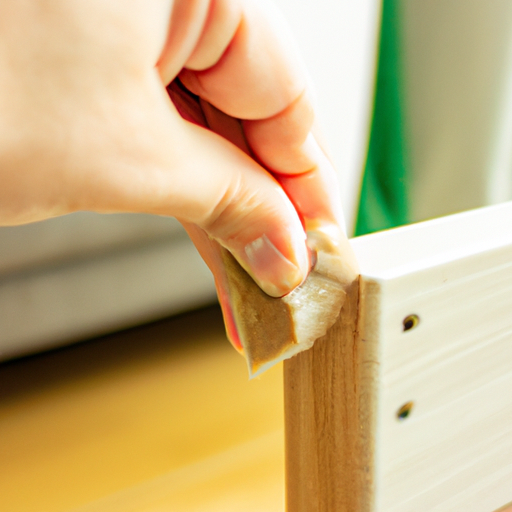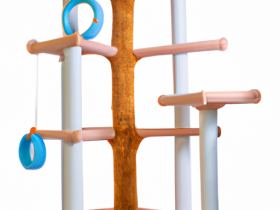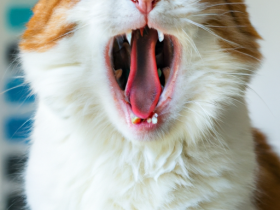“Keep Your Furniture Safe and Your Cat Happy with These Scratching Solutions!”
Introduction
Cats are naturally curious and playful creatures, and scratching is one of their favorite activities. Unfortunately, this can lead to your furniture being scratched and ruined. If you’re a cat owner, you know how frustrating it can be to have your furniture ruined by your cat’s claws. Fortunately, there are some steps you can take to prevent your cat from scratching your furniture. In this article, we’ll discuss some tips on how to prevent your cat from scratching furniture.
How to Train Your Cat to Use a Scratching Post Instead of Furniture
Training your cat to use a scratching post instead of furniture can be a challenging task, but it is possible with patience and consistency. Here are some tips to help you get started:
1. Place the scratching post in an area that your cat frequents. Cats like to scratch in areas that they feel safe and comfortable, so make sure the post is in a spot that your cat visits often.
2. Encourage your cat to use the scratching post by providing treats and praise. Whenever your cat uses the post, reward them with a treat and verbal praise. This will help reinforce the behavior and make it more likely that your cat will continue to use the post.
3. Discourage your cat from scratching furniture. If your cat begins to scratch furniture, immediately redirect them to the scratching post. You can also use a spray bottle filled with water to discourage the behavior.
4. Trim your cat’s nails regularly. Regularly trimming your cat’s nails will help reduce the damage caused by scratching.
By following these tips, you can help train your cat to use a scratching post instead of furniture. With patience and consistency, you can help your cat develop a healthy scratching habit.
How to Deter Your Cat from Scratching Furniture with Natural Repellents
Scratching is a natural behavior for cats, but it can be destructive to furniture. Fortunately, there are several natural repellents that can be used to deter cats from scratching furniture.
The first natural repellent is citrus. Cats dislike the smell of citrus, so placing citrus peels or slices around the furniture can help to deter them from scratching. Additionally, citrus-scented sprays can be used to spray directly onto the furniture.
Another natural repellent is vinegar. Vinegar has a strong smell that cats do not like, so spraying a mixture of vinegar and water onto the furniture can help to deter cats from scratching.
The third natural repellent is double-sided tape. Cats do not like the feeling of sticky tape on their paws, so placing double-sided tape on the furniture can help to deter them from scratching.
Finally, aluminum foil can be used as a natural repellent. Cats do not like the sound of aluminum foil, so placing it on the furniture can help to deter them from scratching.
By using these natural repellents, cats can be deterred from scratching furniture. However, it is important to remember that cats may still scratch furniture even when repellents are used. Therefore, it is important to provide cats with appropriate scratching posts and surfaces to encourage them to scratch in the right places.
How to Choose the Right Type of Furniture to Prevent Cat Scratching
When it comes to preventing cats from scratching furniture, the type of furniture you choose is an important factor. Cats are naturally inclined to scratch, and they can easily damage furniture if it is not made of the right material. To ensure that your furniture is safe from your cat’s claws, here are some tips on choosing the right type of furniture.
First, look for furniture made of leather or vinyl. These materials are not only durable, but they are also scratch-resistant. Leather and vinyl are also easy to clean, so you won’t have to worry about your cat’s claws leaving marks on the furniture.
Second, avoid furniture made of fabric. Fabric is not only easily damaged by cats, but it can also be difficult to clean. If you do choose fabric furniture, make sure it is tightly woven and treated with a fabric protector.
Third, look for furniture with rounded edges. Cats are more likely to scratch furniture with sharp edges, so look for furniture with rounded edges to reduce the risk of damage.
Finally, consider investing in furniture covers. Furniture covers can help protect your furniture from scratches and other damage caused by cats. They are also easy to remove and clean, so you won’t have to worry about your cat’s claws leaving marks on the furniture.
By following these tips, you can ensure that your furniture is safe from your cat’s claws. With the right type of furniture, you can prevent your cat from scratching and keep your furniture looking great for years to come.
How to Trim Your Cat’s Nails to Reduce Furniture Scratching
Trimming your cat’s nails is an important part of keeping your furniture safe from scratches. It is also important for your cat’s health and comfort. Here are some tips to help you trim your cat’s nails safely and effectively.
1. Gather the necessary supplies. You will need a pair of cat nail clippers, a styptic powder or cornstarch, and a towel.
2. Prepare your cat. Make sure your cat is comfortable and relaxed. You may want to give them a treat or pet them to help them relax.
3. Position your cat. Place your cat on a flat surface, such as a table or countertop. Make sure they are secure and cannot move around.
4. Trim the nails. Start with the front paws and work your way to the back. Hold the paw firmly and clip the tip of the nail. Be careful not to clip too close to the quick, which is the pink area in the center of the nail.
5. Stop the bleeding. If you accidentally clip the quick, use the styptic powder or cornstarch to stop the bleeding.
6. Reward your cat. Give your cat a treat or some extra attention to reward them for being so brave.
By following these steps, you can safely and effectively trim your cat’s nails and reduce furniture scratching.
How to Create a Positive Reinforcement System to Discourage Furniture Scratching
Creating a positive reinforcement system to discourage furniture scratching is an effective way to train cats to stop this behavior. Positive reinforcement is a type of training that rewards desired behavior with treats, praise, or other rewards. This type of training is based on the idea that animals are more likely to repeat behaviors that are rewarded.
The first step in creating a positive reinforcement system is to identify the desired behavior. In this case, the desired behavior is for the cat to not scratch the furniture. Once the desired behavior is identified, the next step is to create a reward system. This can be done by providing treats, toys, or verbal praise when the cat refrains from scratching the furniture.
The next step is to create a deterrent system. This can be done by using a spray bottle filled with water, a loud noise, or a motion-activated device that emits a loud noise or spray when the cat approaches the furniture. This will help to discourage the cat from scratching the furniture.
Finally, it is important to be consistent with the reward and deterrent systems. This means that the reward and deterrent systems should be used every time the cat approaches the furniture. This will help to reinforce the desired behavior and discourage the unwanted behavior.
By following these steps, it is possible to create a positive reinforcement system to discourage furniture scratching. This type of training is an effective way to train cats to stop this behavior and can help to create a more harmonious relationship between cats and their owners.
Q&A
1. What can I do to discourage my cat from scratching furniture?
A: Provide your cat with plenty of scratching posts and other appropriate scratching surfaces, such as cardboard scratching pads. Place these items in areas where your cat likes to scratch, such as near their favorite sleeping spot. You can also use double-sided tape or aluminum foil to cover furniture that your cat likes to scratch.
2. How can I make my cat’s scratching posts more attractive?
A: Make sure the scratching posts are tall enough for your cat to stretch out and scratch. You can also add catnip or other treats to the posts to make them more appealing.
3. What should I do if my cat still scratches furniture?
A: If your cat continues to scratch furniture, try using a spray bottle filled with water to startle them. You can also try clapping your hands or making a loud noise to distract them.
4. Are there any other ways to prevent my cat from scratching furniture?
A: You can also trim your cat’s nails regularly to reduce the damage they can do to furniture. You can also use a scratching deterrent spray or a bitter apple spray to discourage them from scratching.
5. What should I do if my cat has already damaged my furniture?
A: If your cat has already damaged your furniture, you can try using a furniture repair kit to fix the damage. You can also cover the damaged area with a throw blanket or other fabric to protect it from further damage.
Conclusion
By following the steps outlined in this article, you can help prevent your cat from scratching furniture and other household items. Start by providing your cat with plenty of scratching posts and other appropriate scratching surfaces. Trim your cat’s nails regularly and use deterrents such as double-sided tape or citrus-scented sprays to discourage scratching. Finally, reward your cat with treats and praise when they use their scratching posts instead of furniture. With patience and consistency, you can help your cat learn to scratch in appropriate places and keep your furniture safe.








Leave a Reply
View Comments